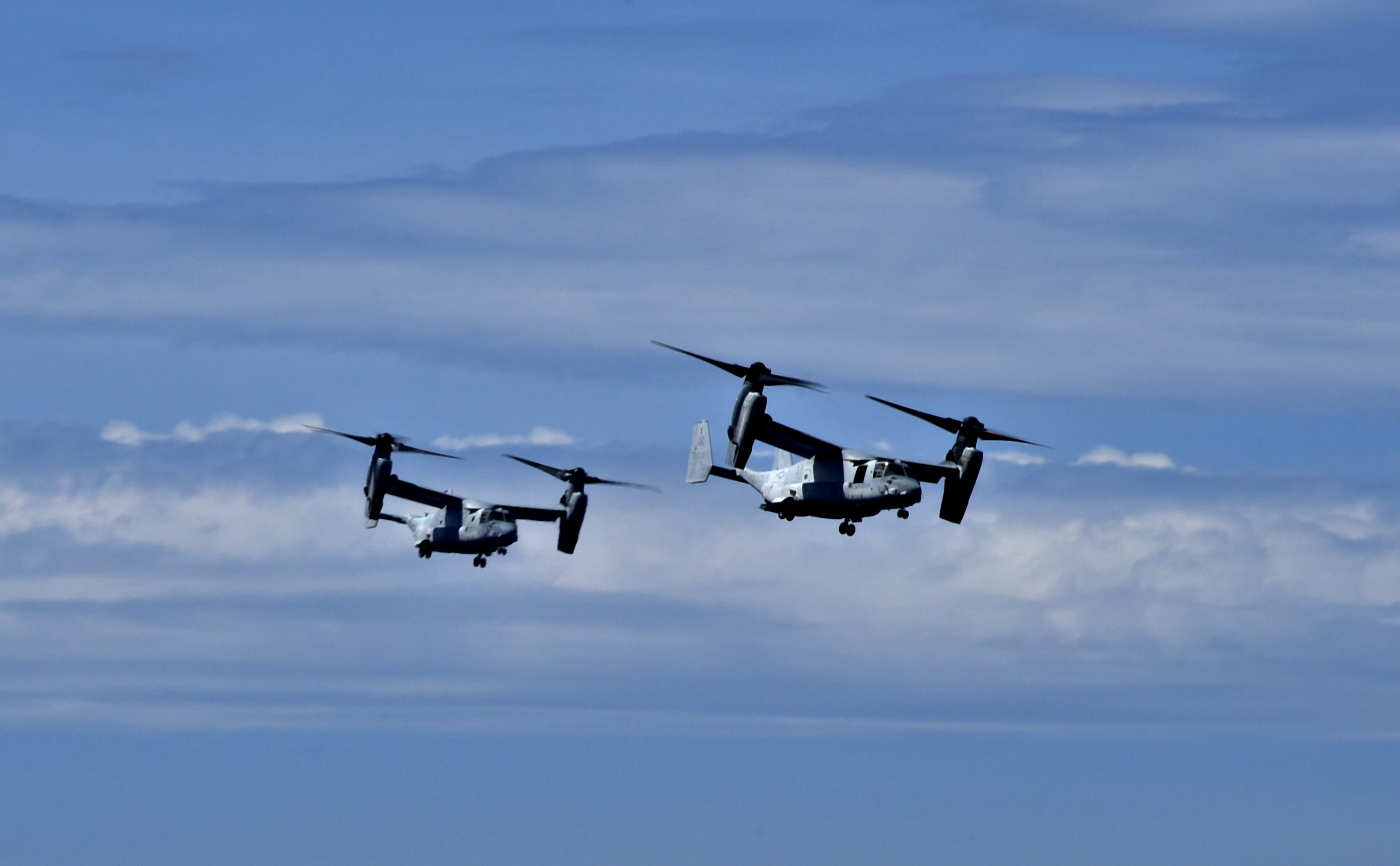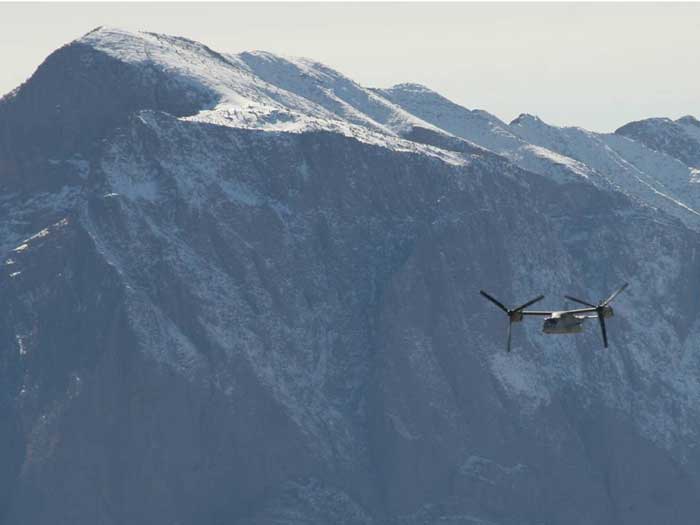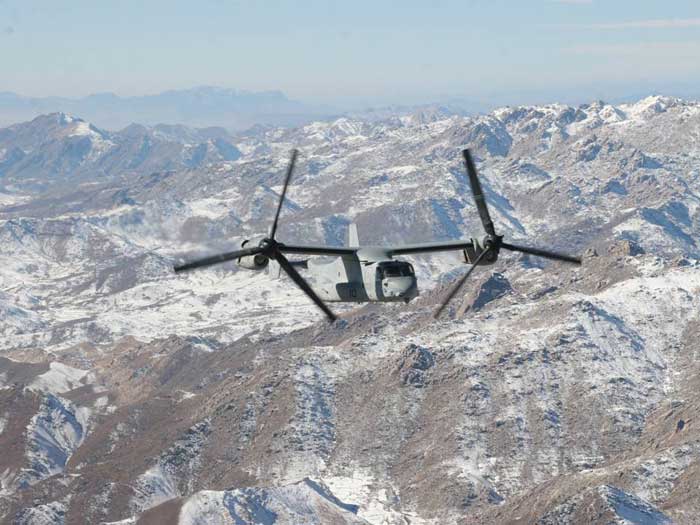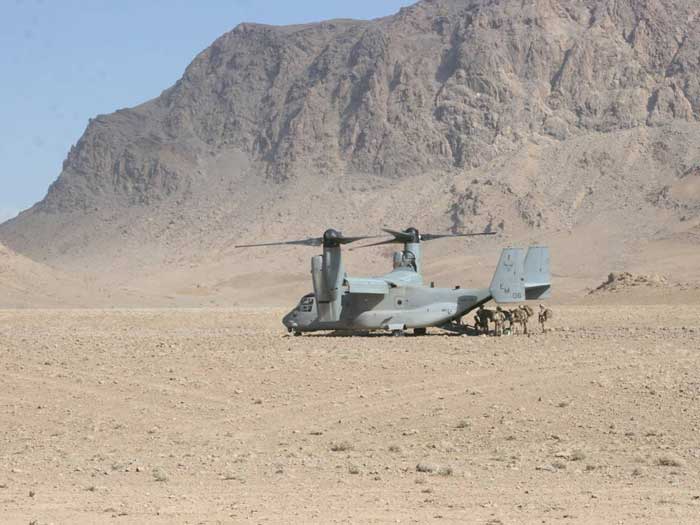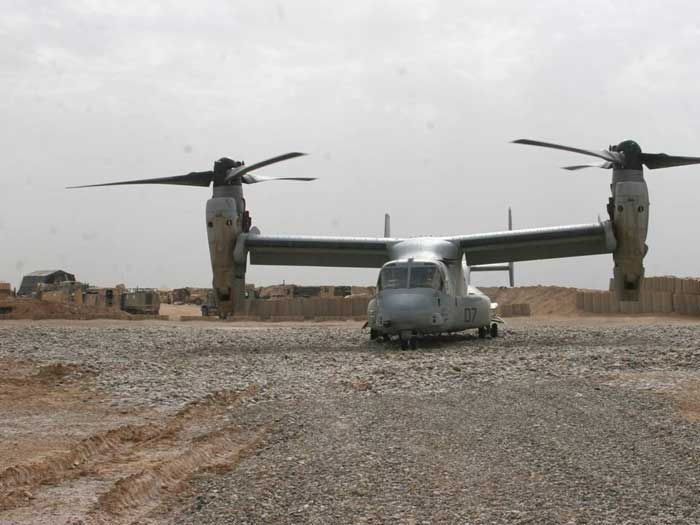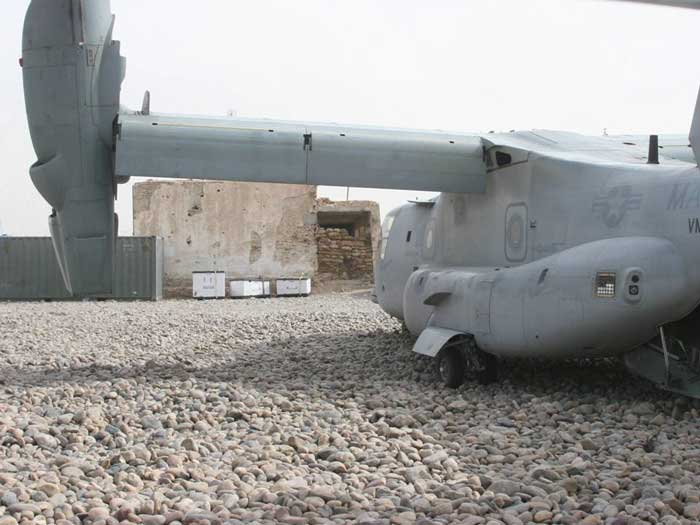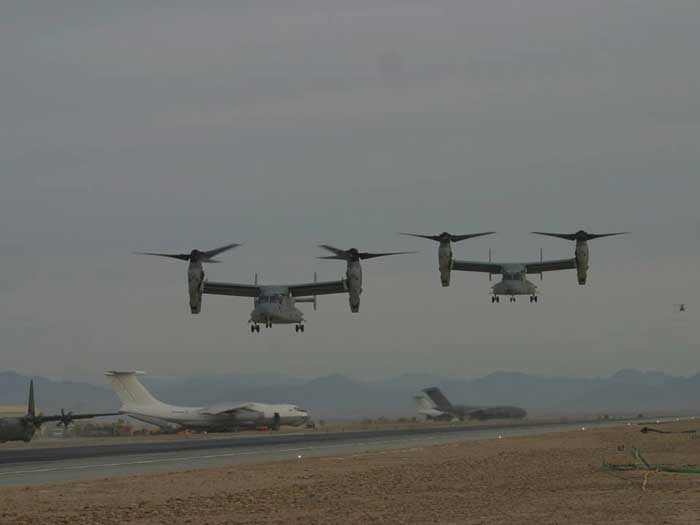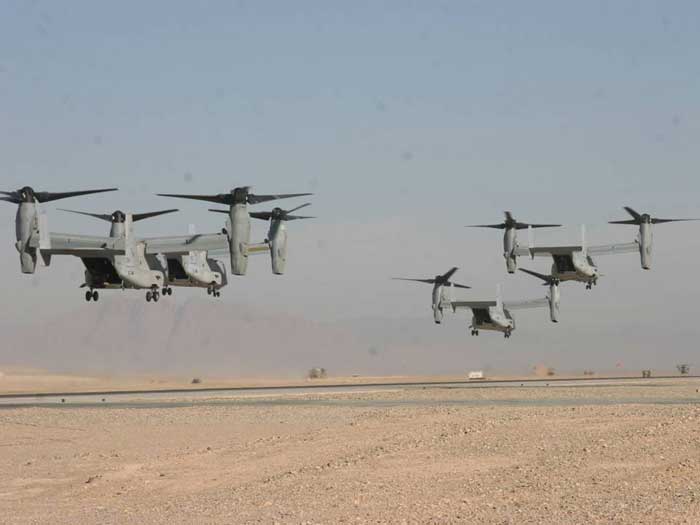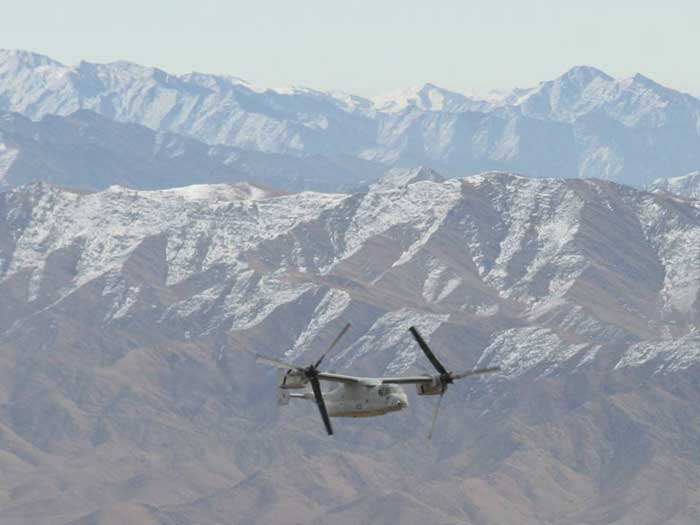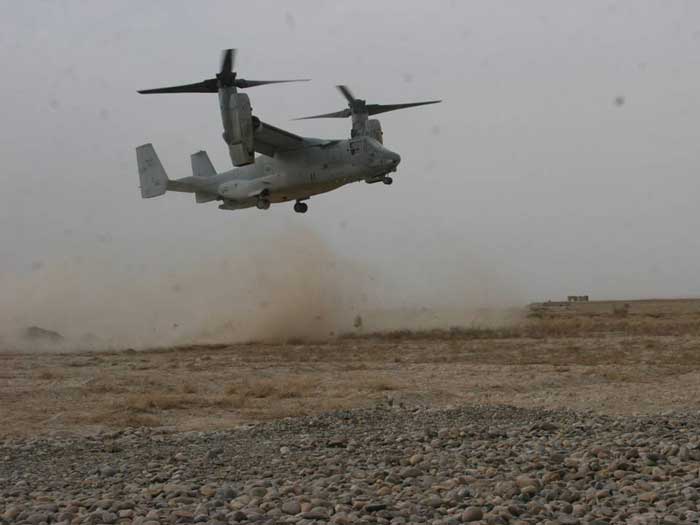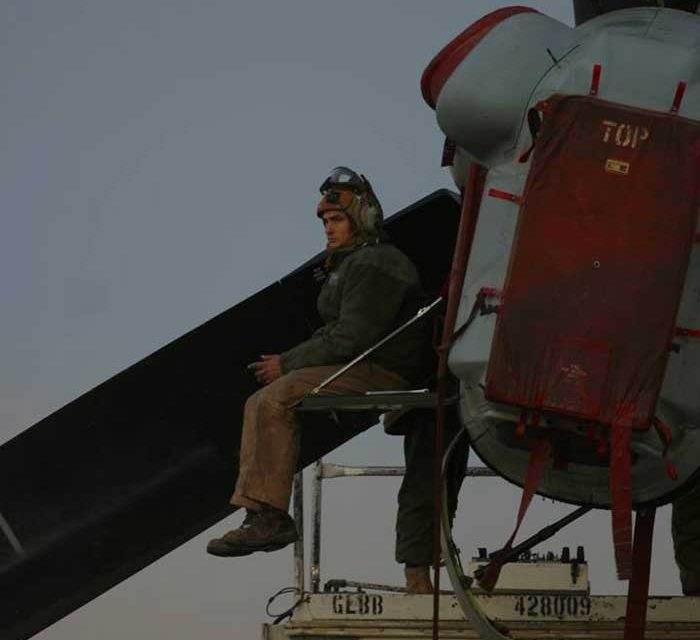By Robbin Laird
I have had the opportunity to follow the standup of the Osprey from the outset of its first deployments.
Clearly, one highlight of shaping that narrative was the first time it was used in combat in Afghanistan.
That interview was done by phone with Lt Col. Bianca, the squadron commander, and the sound of the Ospreys come back from its first combat mission in Afghanistan could be heard in the background.
On February 9th, 2010, “Second Line of Defense”‘ followed up its earlier interview with the Osprey squadron just before its deployment to Afghanistan last November with a new one, this time directly from Afghanistan, with Lieutenant-Colonel Bianca, the Osprey Squadron Commander.
The most compelling point underscored by the squadron commander is how, in effect, the Osprey has inverted infrastructure and platform.
Normally, the infrastructure shapes what the platform can do. Indeed, a rotorcraft or a fixed wing aircraft can operate under specific circumstances.
With the range and speed of the Osprey aircraft, the plane shapes an overarching infrastructure allowing the ground forces to range over all of Afghanistan, or to be supported where there are no airfields, or where distributed forces need support.
The envelopment role of the Osprey is evident in Afghanistan as well, whereby the Osprey can provide the other end of the operational blow for the ground or rotorcrafts in hot pursuit of Taliban. The Osprey can move seamlessly in front of rotorcraft and land forces, allowing the pursuit of different lines of attack.
Now more than a decade later, the initial Ospreys have grown into a large fleet operated by the USMC, the USAF, and now the US Navy and with the acquisition by Japan of Ospreys, the first foreign customer of the aircraft.
And the aircraft operates world wide on the aircraft, and in the words of MAG-26 Commander, Col. Boniface, and “soon the sun will never set on the Osprey as a globally deployed aircraft.”
But unfortunately, the sustainment side of the creation of the globally deployed aircraft has not been matched by shaping a global sustainment enterprise.
It is clear that to get full value from a globally deployed platform like the Osprey, it is crucial to have a logistical system in place which can allow for sustainable global operations at the point of interest or attack, rather than simply waiting for parts to show up from the next Fed Ex shipment to a remote location from a depot based in the United States.
This is especially important as the US and its allies face 21stcentury authoritarian powers who will also focus on the disruption of an already Balkanized logistical operation.
During my visit to 2ndMarine Air Wing in April 2019, I had a chance to discuss the challenge with a very experienced Marine Corps logistics officer, Major Paul M. Herrle. He is currently is head of MALS-26 which is part of MAG-26.
Throughout the discussion, Major Herrle underscored that with the growth of the Osprey numbers, there now was in place a large fleet. But that it was not managed as such. A core point is that even though parts are common throughout the fleet, the USAF has one sustainment system, the Marines another, and with new members of Osprey nation, yet other sustainment systems in play.
He argued that it was increasingly crucial to have an integrated sustainment system and one, which could flow parts to a globally deployed force as well.
He put the challenge this way.
“The USAF supports its ospreys from England; but we can not tap into that support structure to support our SP-MAGTF force in Europe, for example.
“Right now I cannot use USAF parts if I need them.
“I cannot touch the parts on the ship as well.
“I cannot do lateral support from the amphibious ships parts as well for SP-MAGTF.”
He noted that a great deal of his work was leveraging his networks to find ways to fill the gaps, but from his point of view, this is clearly not the way to do business, especially with a mature global fleet of operational aircraft.
The USMC is working to take the multiple configurations of the Osprey and building a common configuration, something being worked at the Boeing plant in Philadelphia.
But alongside this effort, it would make sense to have a common sustainment system, and one which has global hubs from which parts can flow to the fleet, both in normal operations and in crisis situations.
As the USMC is the nations crisis response force, there is a clear need for a sustainment system which could actually function as a core element of the strategic capability to prevail in a crisis.
But as it stands right now, and this is my perspective, and not one I am attributing to Major Herrle, we have created a significant strategic vulnerability, which clearly our peer adversaries will seek to exploit.
Rather than being able to leverage a globally sustained fleet of global aircraft, we have a Balkanized logistical system which is designed from the outset to sub-optimize performance.
Perhaps we can do that in slo-mo war but certainly not in full spectrum crisis management, where we can assume high tempo operations will be required.
First to the fight, but without a durability to continue the fight, is not a strategic motto, I would choose to embrace.
The photos in the slideshow were provided by Lt. Col. Bianca and highlight the Osprey in Afghanistan in early 2010.
For articles highlighting the evolution of Osprey Nation, see the following:
https://defense.info/system-type/rotor-and-tiltrotor-systems/the-osprey/
With regard to the background of Major Herrle, his experience speaks for itself.

The featured photo shows two MV-22 Ospreys, assigned to Marine Medium Tiltrotor Squadron (VMM) 268, flying past the amphibious assault ship USS Wasp (LHD 1) during flight operations in support of Exercise Balikatan 2019.
Exercise Balikatan, in its 35th iteration, is an annual U.S., Philippine military training exercise focused on a variety of missions, including humanitarian assistance and disaster relief, counter-terrorism, and other combined military operations.
(U.S. Navy photo by Mass Communication Specialist 1st Class Daniel Barker)
See also:


